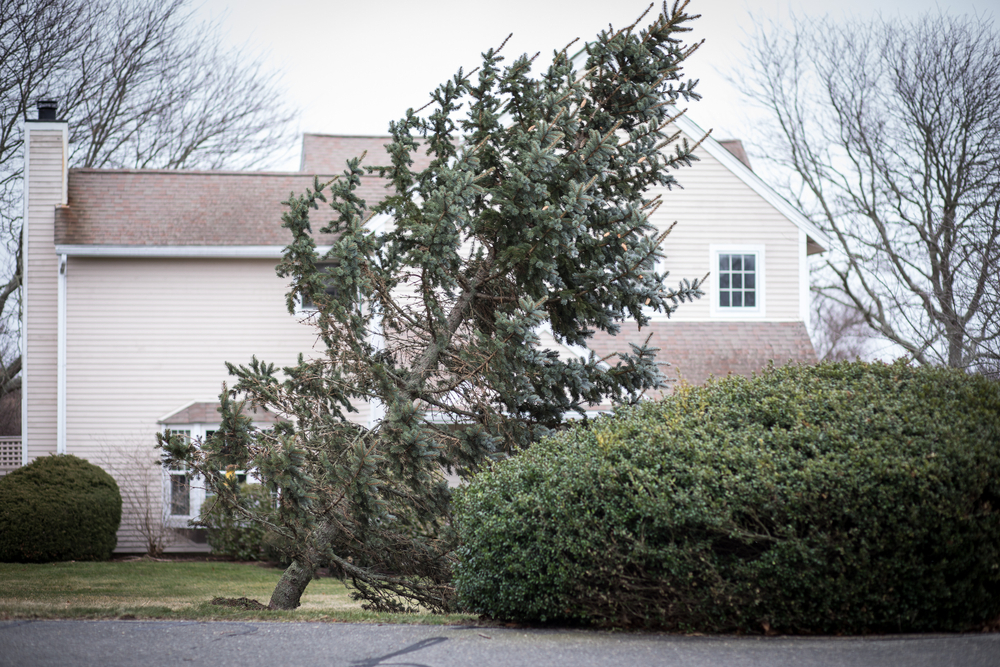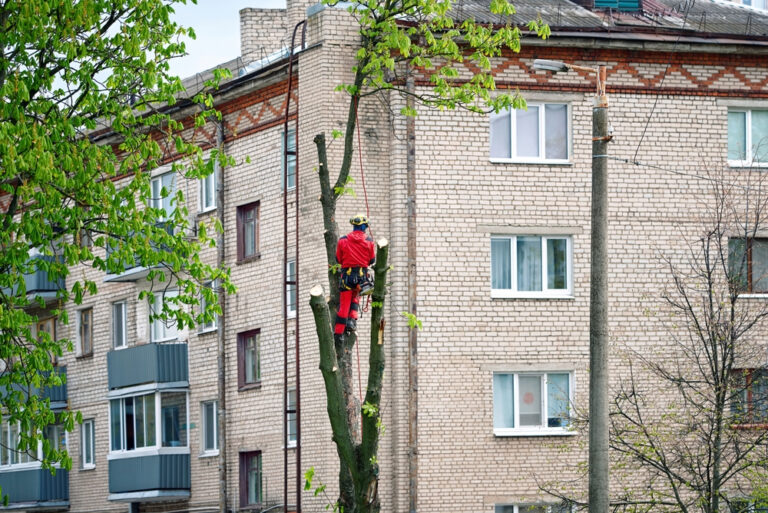What Causes Trees to Lean, and When Should You Worry?
To our landscapes, trees provide structure, shade, and beauty. Supported by a strong root system that firmly grounds them, their natural inclination is to grow straight, toward sunlight. Still, occasionally trees begin to slink. Whether this change comes gradually or quickly, it often leaves homeowners wondering whether there is reason for worry.
Sometimes leaning trees are benign; other times they indicate a clear need for action. This guide clarifies typical reasons what causes trees to lean, methods of evaluation of their degree, and when to respond. Understanding the reasons for tree leaning can help you to make wise decisions and maintain the beauty and safety of your environment.
Common Causes of Tree Leaning
A tree could lean for several different causes. While some of these reasons could point to the tree in trouble, others are normal and do not suggest a major problem. Here is a detailed analysis of the reasons trees slant:
1. Wind and Storm Damage
One of the main reasons leaning trees occur, especially in locations likely to storms, is wind. Particularly in cases of loose or watery soil, strong gusts can force on the trunk and branches, upsetting the tree.
- How Wind Impacts Trees: Tree stability comes from their trunk and roots, which are impacted by wind. Particularly if the ground is wet from rain, which softens and lessens stability, the pressure may be too great for the roots to hold in severe gusts. The tree might so start to slant.
- Effects of Storm Damage: Along with powerful winds, storms can bring ice, snow, or heavy rain. The force of the wind with this extra weight can cause the tree to lose equilibrium. Check trees for bending after a big storm as well as any exposed roots, cracks, or damaged branches that might point to a severe problem.

2. Soil Erosion
When water or wind wears away the ground, it exposes and occasionally even removes the soil holding the roots of the tree. Roots cannot securely ground the tree without the required soil for support, which can cause tilting.
- Why Erosion Impacts Tree Stability: Tree roots rely on the surrounding soil to keep them in place and extend outward to help the tree bear weight. The roots are exposed and lose their capacity to ground the tree when erosion destroys this soil.
- Preventing Soil Erosion: Stressing Soil Erosion Prevention Mulch around your trees’ bases to help retain moisture and maintain soil in place, therefore preventing erosion. Additionally helping to stop erosion close to your trees is ground cover planting or barrier installation to control water movement.
3. Root Disease
Sick roots can compromise the base of a tree. Particularly in places with wet, humid soil, one of the most often occurring root illnesses is fungal infection. Rotting and decaying diseased roots lessen their capacity to sustain the tree.
- Fungal Infections and Tree Health: Fungal infections can attack roots and cause root rot in damp soil by means of their dissemination. Rotting roots weaken the tree and cause it to bend or perhaps fall over as they cannot effectively absorb nutrients or water.
- Signs of Root Disease: Signs of root disease include yellowing leaves, general slowed development, and mushrooms developing at the base of the tree. While early treatment occasionally saves a tree, in many situations a tree with major root disease may have to be taken down for safety.
4. Construction and Development Damage
Particularly if digging is involved, construction and landscaping projects near trees might compromise roots. Even basic landscaping projects like building a patio or sidewalk can cut through roots, therefore challenging the tree’s ability to remain upright.
- Impact of Root Cutting: Root cutting—cutting or upsetting the roots during landscaping or construction—reduces the tree’s support system, increasing its leaning susceptibility. A tree can be much weakened over time by even small harm.
- Protecting Trees During Construction: Surrounding trees near building sites with barriers will help to keep machinery from coming too close. Before starting a project close to a tree, one can also help prevent damage by consulting an arborist.
Assessing the Severity of Tree Leaning
Not one leaning tree is an emergency. Some signs, nevertheless, can guide you in knowing when a leaning tree requires maintenance and when it doesn’t.
Visual Inspection
- Check the Angle of Lean: A tree may not be immediately cause for alarm if it is slightly leaning but has not altered position over time. If the lean seems to be growing, though, this could point to a weakened root system.
- Look for Exposed Roots: Because exposed roots surrounding the base of a leaning tree may have been uprooted by shifting ground or storms, they generally indicate instability. If you notice big roots protruding, you should examine more closely.
- Examine the Tree’s Health: Review the health of the tree. Sometimes a healthy tree may withstand a lean; but, if the tree also exhibits symptoms of stress—such as yellow leaves, dead branches, or peeling bark—the lean could be a sign of a more severe condition, including root disease.
Professional Evaluation
Trained to evaluate tree health and safety, a certified arborist is Trees near buildings, paths, or other high-traffic areas especially need an arborist since falling trees could cause damage.
- Benefits of Consulting an Arborist: Advantages of hiring an arborist To find the reason of leaning in a tree, an arborist might examine its roots, trunk, branches, and surroundings soil. They can determine whether the tree calls for help or if it is probably going to settle on its own.
- Recommended Solutions: Arborists could advise bracing, cabling, or trimming to help the tree. Sometimes they may advise removal should the tree be beyond safe rehabilitation.

When to Worry and Take Action
The degree of the lean, the placement of the tree, and its general condition will all affect whether to step in with a leaning tree.
Minor Leaning
A tree may not need quick attention if it seems healthy and has a minor tilt. Still, there are things you can do to stop more leaning:
- Monitor the Lean: Keep watching the tree to make sure the tilt is not getting worse. Should the lean not change with time, the tree might be stable.
- Light Pruning: Light pruning is Eliminating heavy or uneven limbs helps the tree to remain stable by lightening its total weight. Steer clear of over pruning since it weakens the tree.
- Add Supports: Attaching flexible steel cables or bracing to heavier branches helps to maintain the tree’s equilibrium. This approach gives more support, hence it is usually successful for trees with minor tilting.
Severe Leaning
Particularly if it is close to buildings, electricity lines, or another area where a fall can cause damage, a tree with a notable tilt should be closely inspected.
- Assessing the Risk of Severe Leaning: Evaluating a badly leaning tree with exposed roots, trunk fissures, or a quickly changing angle of lean could reveal that the tree is immediately in risk of toppling. One should give this kind of lean top importance.
- Taking Urgent Action: Should the tree present an imminent hazard, think about seeing a professional for emergency tree care. For high-risk trees, some arborists provide emergency services, therefore helping to prevent mishaps.
- Removal as a Last Resort: Sometimes a seriously leaning tree cannot be spared and must be taken down to safeguard lives and property. A last resort is tree removal; a qualified arborist can assist to decide whether this is the best course of action.
Preventing Leaning in Trees
Prevention is usually better than a cure; hence, there are numerous actions you can take to enable trees to develop from the start strong and stable:
- Choose the Right Location: Plant trees where they will have enough room for roots to spread. Steer clear of places with high traffic or compacted soil to prevent limiting root development.
- Use Proper Planting Techniques: Make sure trees are set at the right depth. While planting a tree too shallow can expose roots and increase the likelihood of leaning, planting a tree too deep can limit root growth.
- Water and Mulch Regularly: Mulching and correct watering help to preserve good soil and roots, so giving the tree the tools it requires to remain straight.
- Prune Correctly: Regular, balanced pruning distributes weight and keeps branches from growing overly heavy on one side, therefore enabling trees to grow evenly.
Conclusion
Essential components of our environments, trees provide value, shade, and beauty to all around us. But occasionally, especially if the lean is fresh or extreme, leaning trees can indicate concern. Understanding the primary reasons of leaning—including wind damage, soil erosion, root disease, and construction—you can evaluate whether a tree’s lean poses a risk and determine when it’s time to call for assistance.
Though not all leaning trees pose concern, regular inspections and monitoring are absolutely vital. While a little lean might not call for intervention, a tree showing evidence of root damage or leaning gradually over time should be seen by a qualified arborist.
Tree Trimming Richmond
(804) 533-3943
https://treetrimmingrichmond.com/



